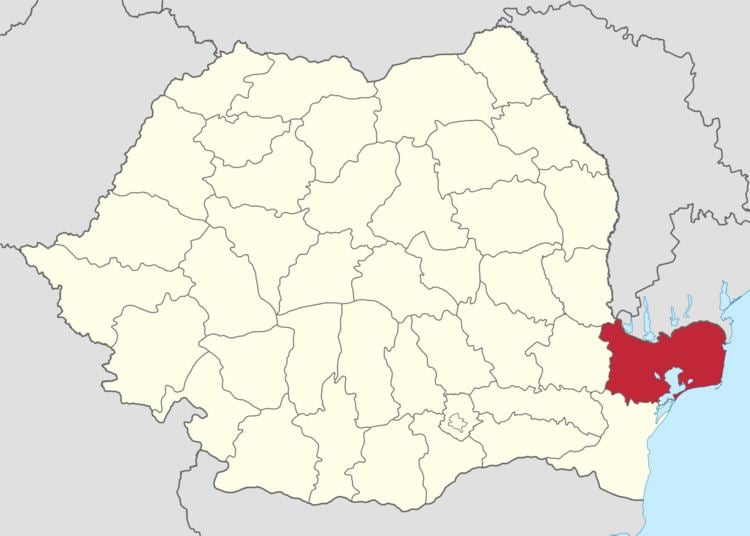Area rank 4th | Telephone code (+40) 240 or (+40) 340 | |
 | ||
Tulcea ([ˈtult͡ʃe̯a]) is a county (județ) of Romania, in the historical region Dobruja, with the capital city at Tulcea.
Contents
- Map of Tulcea Romania
- Demographics
- Geography
- Neighbours
- Economy
- Tourism
- Politics
- Administrative divisions
- References
Map of Tulcea, Romania
Demographics
In 2011, Tulcea County had a population of 201,462. The population density was 23.7/km², the lowest among the counties of Romania.
In the Danube Delta there is an important community of Russians and Lipovans. In the south of the county there are communities of Turks. The region once was a centre of Islam in Romania.
Geography
The county has a total area of 8,499 km².
The most significant feature of Tulcea County is the Danube Delta, which occupies about 1/3 of the entire surface and is located in the North-East side of the county. The Delta has three main branches: the Sulina branch (the only one navigable by large ships) in the middle, the Chilia branch in the North (the border with Ukraine) and the Sfântu Gheorghe branch (Saint George) in the South.
In the South-East of the county there are two lagoons: Razelm Lake and Sinoe Lake. In the Danube Delta and in the South—in the area between the Sfântu Gheorghe Channel and Razelm Lake—there are countless channels and small lakes. The entire area is included in the UNESCO list of World Heritage Sites and Biosphere reserves.
The Danube River flows around the county in the West and North side. In the West there is the Măcin Branch which flows on the East side of the Great Brăila Island. From Smârdan (on the opposite side from Brăila) to Pătlăgeanca (close to Tulcea), the Danube has only one big flow of water, around which there are an immense number of lakes and small channels.
In the center of the county there is the Casincea Plateau and the Măcin Mountains—the remains of a prehistorical mountains range (more than 400 million years old), with the greatest height at about 400 m.
Neighbours
Economy
Agriculture and fishing are the main occupations, involving about 48% of the population. Industry is concentrated in the large towns only.
The predominant industries in the county are:
Tourism
Tourism is an important activity in the county, the Danube Delta being one of the most visited areas in Romania.
The main destinations for tourists are:
Politics
The Tulcea County Council, elected at the 2016 local government elections, is made up of 31 counselors, with the following party composition:
Administrative divisions
Tulcea County has 1 municipality, 4 towns and 46 communes.
